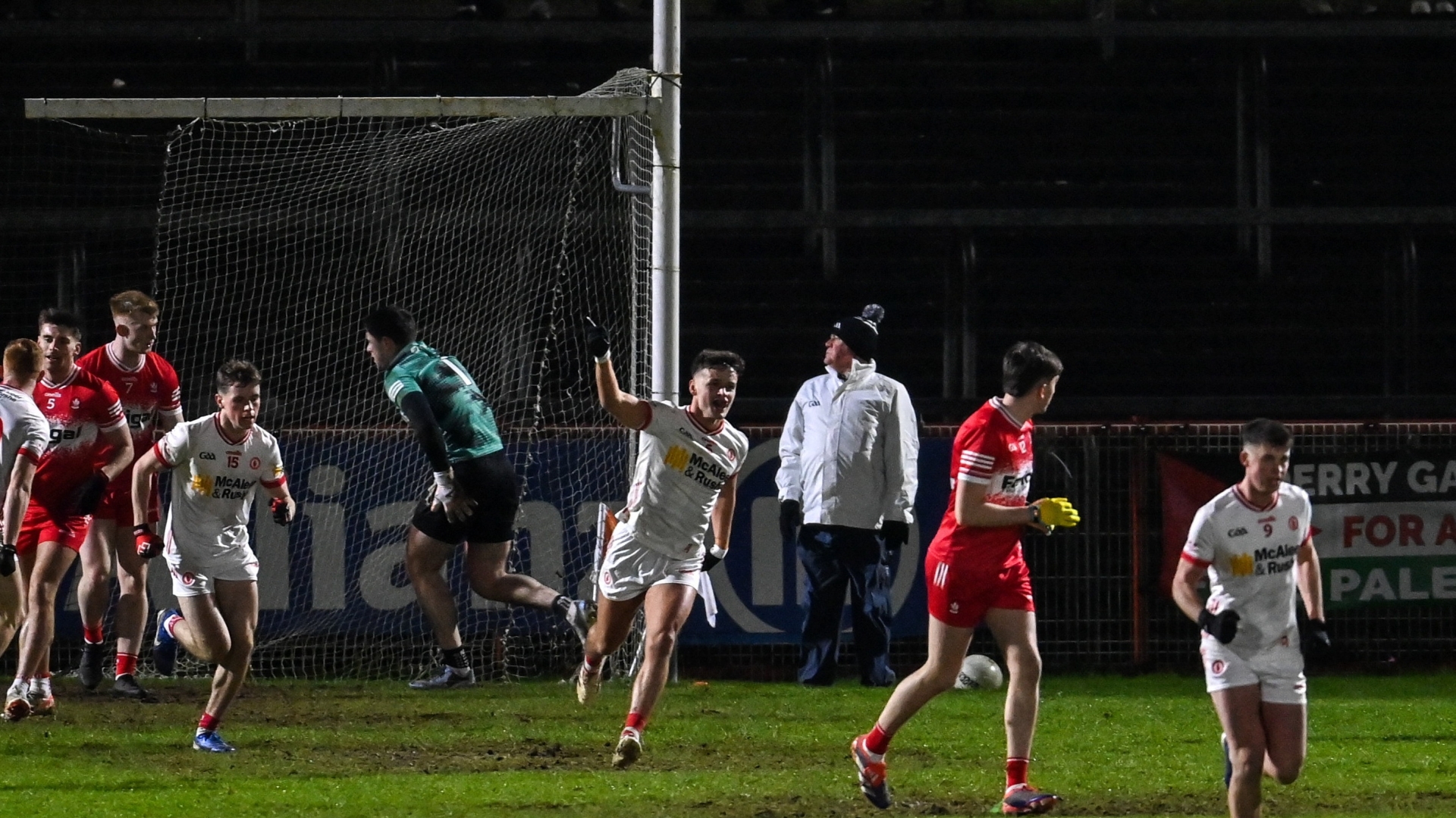Three Up and Three Back
Each team must have a minimum of three players inside the opposition’s 65-metre line at all times. Similarly, when defending, teams must keep three outfield players inside their opponent’s 65-metre line, leaving a maximum of 11 players and the goalkeeper to defend.
If a defending player retreats beyond their 65-metre line to give their team a numerical advantage, a free will be awarded to the opposition on the defending team’s 13-metre line. If a player carries the ball past their own 65-metre line and leaves fewer than three teammates behind, the opposition will be awarded a free at the point where the player crossed the line
Tyrone v Derry: A rule change perhaps the most difficult to police - unless it's policed itself - wasn’t a factor at all, with neither side penalised. Both looked pretty well-schooled on who could and could not move in and out. Both teams played with three close to goal and although that created space in front of them, further up the field, where the 12 v 11 or 11 v 11 battles were taking place, it was congested. It was noticeable that for long spells, particularly in the first half, both were very wary of getting turned over - perhaps it’s an Ulster thing.
The placement of Michael McKernan, who would’ve traditionally been an offensively-minded corner-back, to centre-back, worked a treat for Malachy O’Rourke. It meant McKernan wasn’t inhibited as one of the back three and had a huge impact on the game, winning man of the match and scoring 1-2.
Galway v Armagh
There were a number of transgressions in the three-up and three-back rule in Pearse Stadium on Saturday night and it emerged afterwards that there had been conflicting information given to Armagh manager, Kieran McGeeney and referee Noel Lane.
The three-up rule states that at least three outfield players must be in each half of the field, with breaches leading to a free on the 20m line.
Armagh were penalised for this rule in the second half and substitute Shane Walsh utilised the option to take the free from outside the 40m arc and curl over a two-pointer.
McGeeney said he had received information that the free had to be taken from the 20m line and was able to produce proof of this information on his ‘phone. “This has changed three times this week," McGeeney said. “But then we asked for clarification during the week and we were sent it last night. I showed it to the ref (Conor Lane), and he showed me his (rule instructions) and they're completely different.”
Roscommon v Down
There was confusion at one point in the second half when referee was notified through his headpiece that a three-up infraction had occurred. He stopped play, but it then transpired that he was given wrong information. He had to restart the game with a free to the team in possession (although they were not able to score directly from it).
Dublin v Mayo
For the first time in the history of the game, the GAA has restricted movement on where players can go. In modern Gaelic football, the last thing players want is to be seen to be lazy, but Saturday night’s affair only saw this rule broken once … and only marginally thanks to the ability of micing the referees with his officials, which saw one of the three Dublin players cross the halfway line. No doubt if this was a standard club game it wouldn’t have been spotted. All in all both teams used the rule well with the three inside forwards on both teams generally remaining tight together before making darting runs wide to either create space for the runners or be an option.
Subscribe or register today to discover more from DonegalLive.ie
Buy the e-paper of the Donegal Democrat, Donegal People's Press, Donegal Post and Inish Times here for instant access to Donegal's premier news titles.
Keep up with the latest news from Donegal with our daily newsletter featuring the most important stories of the day delivered to your inbox every evening at 5pm.